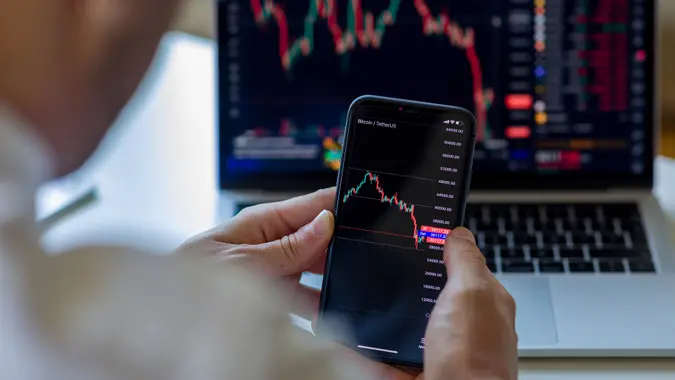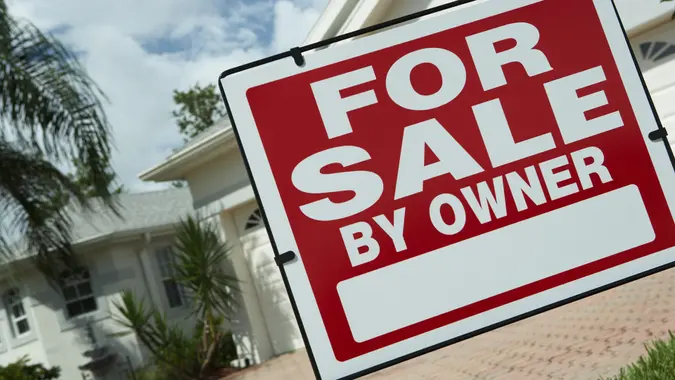The Rise of Stablecoins — What Are They, and How Do They Work?

Commitment to Our Readers
GOBankingRates' editorial team is committed to bringing you unbiased reviews and information. We use data-driven methodologies to evaluate financial products and services - our reviews and ratings are not influenced by advertisers. You can read more about our editorial guidelines and our products and services review methodology.

20 Years
Helping You Live Richer

Reviewed
by Experts

Trusted by
Millions of Readers
Most news reports about cryptocurrency focus on soaring or plummeting prices. Bitcoin, for example, lost over half its value between April 2021 and July 2021, and then about doubled in price between September 2024 and January 2025.
But not all coins are meant to appreciate. In fact, stablecoins are specifically designed to maintain a constant price — one tied to a fiat currency like the U.S. dollar. Here are more details about what stablecoins are and how they work.
Also see the six cryptocurrencies with the highest trading volume.
How Do Stablecoins Work?
Stablecoins are “pegged” to a fiat (traditional) currency like the U.S. dollar. That means the stablecoin maintains a 1-to-1 value with the pegged currency. Whereas Bitcoin prices change almost constantly, a dollar-pegged stablecoin is always worth $1, or within a few cents of $1.
Take Tether (USDT), for example. It’s the largest stablecoin and the fourth-largest cryptocurrency overall by market cap. It’s pegged to the U.S. dollar and is fully backed by cash and assets easily converted to cash, which keeps the price stable. As long as $1 is worth $1, one USDT is also worth $1. But USDT is also a digital currency compatible with many different crypto networks.
What Can You Do With Stablecoins?
You can use stablecoins in several different ways.
Cryptocurrency Trading
When you invest in stock through an investment brokerage, you deposit dollars into your account. You use those dollars to purchase stock that trades on an exchange. Although the stock price rises and falls, your dollar is always worth a dollar.
Cryptocurrency trades are different. As purely digital transactions, they occur on blockchains that can’t process transactions in dollars or other fiat currencies. You need to first use your dollars to purchase a blockchain-compatible digital currency to serve as a store of value. You then use that stored value to purchase the crypto you want to invest in.
Say you wanted to buy $100 worth of Bitcoin. Here’s how you’d do it.
- Deposit cash into your account on a cryptocurrency exchange, like Coinbase or Kraken.
- Use your cash deposit to buy USDT.
- Use the USDT to purchase Bitcoin. This is called a conversion because you’re converting USDT to Bitcoin.
You don’t have to use your stablecoins right away. They can sit in your account until you need them. They’ll be worth the same then as they were when you purchased them.
Cryptocurrency Staking
Blockchains work like ledgers to record transactions. But transactions can be added to a blockchain only after they’ve been verified and processed. You can lock up — or stake — your stablecoins so that the exchange can use them in the validation process. In return, you get a share of the rewards validators earn.
Cryptocurrency Lending
You can loan out your stablecoins by adding them to a lending pool on a platform that facilitates the loans. Although you can earn high rates for crypto you loan out, you also have a high risk of losing your investment.
Where To Buy Stablecoins
You can buy stablecoins on any number of different exchanges, such as Coinbase, Kraken and Binance. First, open and fund an account on your preferred exchange. Then navigate to the platform’s trading options to select the coin you want to purchase and how much you want. After confirming that the information is correct, submit your order.
 Written by
Written by  Edited by
Edited by 

























